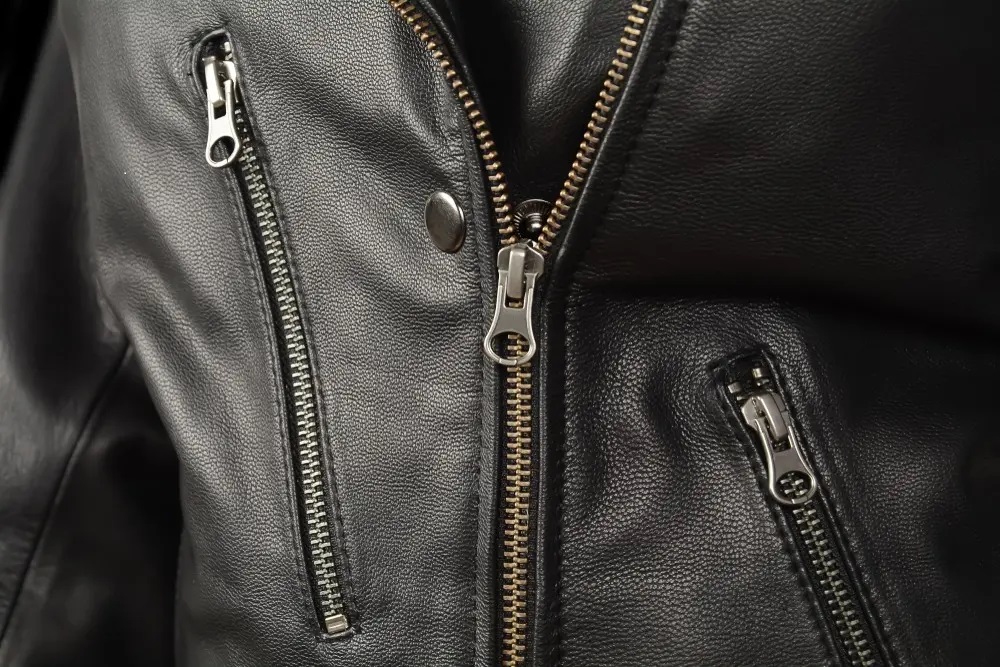Leathers & Suede Cleaning
Washington, DC’s Finest Leather & Suede Cleaning & Conditioning, including On-site Storage

Parkway Custom Drycleaning has been cleaning and restoring leather and suede garments for decades. Most leather and suede coats and jackets have care labels that say “Clean by Leather method” or “Professionally leather clean.” Parkway Custom Drycleaning offers over 95 years of leather cleaning experience, and we have also partnered with the finest dye and finishing specialists in the country to aid in the restoration and conditioning of your leathers and suedes when the need arises.
Whatever cleaning needs or requests you have for your suede or leather jackets, coats, shoes, handbags, and accessories, Parkway Custom Drycleaning can provide the service. We also offer alterations, repairs and even restylings as well.
Get A Quote Today
What Our Leather & Suede Cleaning Service Can Do
Authentic suede and leather garments demand special handling to safeguard their finish, texture, and color. Thus, it is recommended that you entrust your garment solely to our professional leather & suede cleaners as we have the expertise and equipment designed for this delicate and specialized process. Here are some of the advantages of using Parkway Custom Drycleaning to clean and restore your leather and suede garments:

- Extend the useful life of your garment – Our delicate techniques will restore oils that have diminished or worn off over the years to give you many more years to enjoy your leather coats and suede jackets.
- Provide Lasting Protection – While leather and suede garments are renowned for durability, they still require professional care to maintain their strength and resilience. We use specifically formulated products to protect your suede & leather garments and accessories.
- Remove Stains and Spots – Spotting and stain removal of leathers and suedes is not the same as removing stains from silk, wool and cotton garments. Our specialists have many years of experience and have taken advanced training courses to optimize the restoration of your special leather and suede garments.
- Revitalize Appearance – Leather & suedes are made from animal skins. Cleaning and restoring garments and accessories made of skins is extremely challenging. Our leather care process includes conditioning, which is specifically designed not only to remove staining, soils and other impurities but to also restore the natural sheen of your leather & suede coats and other items.
- Reduce Cracking and Peeling – While it is impossible to provide complete protection from cracking and peeling, our cleaning and conditioning methods will help restore your leather jacket and minimize these natural occurrences, maintaining the integrity and smooth texture of your items for years to come.
- Reduce Color Loss: Prolonged exposure to the sun and various environmental elements can lead to color fading. Parkway Custom Drycleaning’s cleaning service takes special care to restore areas that have experienced color loss and our protective conditioning can slow down and sometimes prevent any significant color loss, preserving the vibrancy of your leather and suede coats and other items. We also have experts who can color match and re-apply dyes to mask or eliminate imperfections and stains that can’t be fully removed without risking fabric damage.
- Enhance Wearable Comfort: Cleaned and conditioned leather and suede not only look better but also feel more comfortable. Our expert and proprietary cleaning techniques can often soften leather and suede coats, restoring the suppleness that often diminishes through normal use and with exposure to the elements.
We Clean Leather Jackets, Suede Coats, & More
- Coats & Jackets: From stylish leather jackets to cozy suede outerwear, we provide specialized cleaning to keep these items looking refreshed. Our methods can also help protect and increase the useful life of your garments and accessories.
- Handbags, Purses, & Wallets: Bring Parkway your leather and suede handbags, purses, totes and wallets for help removing or reducing stains, marks, and scuffs.
- Shoes: From Uggs to other suede boots, classic leather loafers, designer heels and more, your footwear deserves the best care. Parkway Custom Drycleaning works with a shoe and boot specialist who can clean, shine and expertly repair your shoes and boots.
- Other Garments: We also clean leather and suede pants, skirts, vests, and all types of garments.
- Accessories: From belts to gloves, we clean and condition all leather and suede accessories with care.
Common Issues Affecting Leather and Suede Garments
The staff at Parkway Custom Drycleaning prides itself on informing our customers of our techniques and any risks associated with the cleaning and restoration of a garment or specialty item. Below is a brief review of some of the inherent risks associated with the cleaning of garments and accessories made of leather or suede:

- Shrinkage
Suede and leather naturally have a tendency to slightly draw up and contract as their skins dry out, losing natural oils in the process. In many instances, a thorough cleaning effectively restores most oils, thereby prolonging the life of the garment. In many cases, depending on the degree of shrinkage, the garment can be satisfactorily stretched by a special processing technique. - Skin Defects
Animal skins often have imperfections such as marks from insects, scars from wounds, and more. Manufacturers then use oils, dyes, and pigments to cover up these flaws. However, the dyes used for masking are not permanent and tend to fade during exposure to the elements and cleaning. As a result, the previously concealed defects become more visible. On suedes, they show as light areas, while on grain leather, they can appear as dark spots. - Dye Transfer
Manufacturers usually opt for colorfast dyes when blending suede or leather with cloth garments. However, when dark suede or leather is paired with light-colored cloth, or when strongly contrasting shades of suede and leather are located side by side in a single garment, there is always a chance of dye transfer or color bleeding from the dark color to the lighter one. - Belly Wrinkles & Thin Skins
Belly wrinkles and thin skins are natural types of damage. Wrinkles that stop at specific panel seams are known as “belly wrinkles.” Thin skins, typically split or shaved, often show unevenness in the nap. When the skins are cleaned the surface tissues are exposed and the belly wrinkles and thin or weak areas become more exposed which can sometimes lead to holes. Leather and suede repair is another unique specialty offered by Parkway Custom Drycleaning. Our staff has years of experience dealing with this and can repair weak areas when necessary.
Book A Leather & Suede Cleaning Service Today!
Ensure your favorite leather and suede items continue to radiate elegance and style. Whether you need simple cleaning, maintenance reconditioning, or urgent repairs, Parkway Custom Drycleaning is up to the challenge. Call us at (301) 895-7761 to schedule a service.
Frequently Asked Questions
Yes, Parkway Custom Drycleaning has built a state-of-the-art onsite climate controlled storage vault in our 10,000 square foot facility in N. Bethesda, MD. Protect your, leather jackets, suedes, fur coats, winter woolens and cashmeres from insect damage, humidity and temperature swings that can damage or reduce the useful life of your precious garments.
Yes! We regularly service leather jackets, suede coats, and other specialty garments and accessories from customers throughout the United States – just ship us your pieces and we will contact you after inspection to go over the details of our process as well as pricing.
Yes we do! Parkway Custom Drycleaning offers specialized cleaning services for fur coats, complete with conditioning and on-site storage. We also provide fur repairs, alterations and restylings.
Parkway Custom Drycleaning offers eco-friendly cleaning and conditioning of leathers, suedes, furs and all types of delicate garments and household linens. We offer pickup and delivery in the metro Washington, DC area, including the following specific neighborhoods and areas: :
Washington, DC: Adams Morgan, Capitol Hill, Cleveland Park, Dupont Circle, Foxhall, Friendship Heights, Georgetown, Glover Park, McLean Gardens, Northwest Washington, Palisades, Spring Valley, Wesley Heights, Woodley Park, Parts of Northeast/Southeast/Southwest DC.
Maryland: Bethesda, Cabin John, Chevy Chase, Glen Echo, Kensington, Silver Spring, Montgomery County, Potomac, Rockville, Parts of Gaithersburg
Northern Virginia: Arlington, Alexandria, Annandale, Crystal City, Fairfax, Falls Church, Great Falls, Mclean, Oakton, Reston, Rosslyn, Tysons Corner, Vienna, Parts of Herndon, Parts of Springfield
.. and if your area isn’t included in the list, please call us for more information. We can sometimes send a special driver out to your home or office if you have a large enough order.